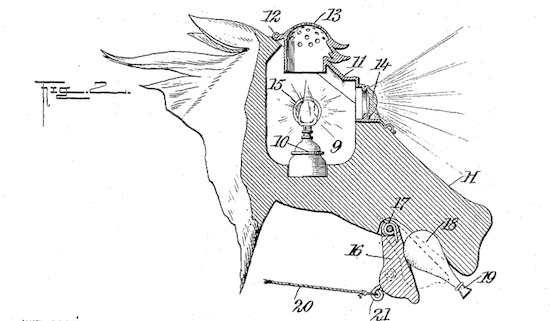Horse attachment for an automobile — U.S. patent 777,369 issued in 1904 [Source: Google Patents]

Last month the National Highway Transportation Safety Administration proposed a new rule that would require all electric and gas-electric hybrid vehicles to make a noise when they’re traveling under 18 miles per hour. This noise would alert pedestrians and cyclists to the presence of a car, since most of us have grown up conditioned to the noise of the automobile on the street — that relatively loud, gas-powered car that has dominated the roadways of the 20th century. The proposal is currently open for public input but the final rule will be set by next month.
Inventors at the dawn of the car age had a similar dilemma in trying to retrofit newer technology with characteristics of the old in order to make humans (and sometimes even animals) more comfortable with the changing times.
In the early 1900s some people had concerns that all of these newfangled automobiles on the road were spooking horses. At least three American inventors devised attachments for automobiles to put the horse back in the horseless carriage. U.S. patent number 777,369 was granted to Henry Hayes of Denver in 1904 for a motor vehicle attachment which, when applied, makes it look like there’s a horse pulling your vehicle.
The curious device had an oil lamp concealed inside the head of the horse attachment which lighted the way. It also had a rope that could be pulled which would force the artificial horse’s mouth closed, squeezing a horn.
Of course, this rather cumbersome attachment never really caught on with those motorists who may have been sympathetic to the horse’s plight. But it looks like the NHTSA’s new rules will soon bring an anachronistic sound to our most futuristic vehicles. Unless we find some way to build cities with pedestrians and cars clearly separated, one assumes the street noise of the 20th century will be our reality for some time to come.
You can listen to the sounds proposed by the NHTSA at their website.
Detail of the horse attachment’s head [Source: Google Patents]





